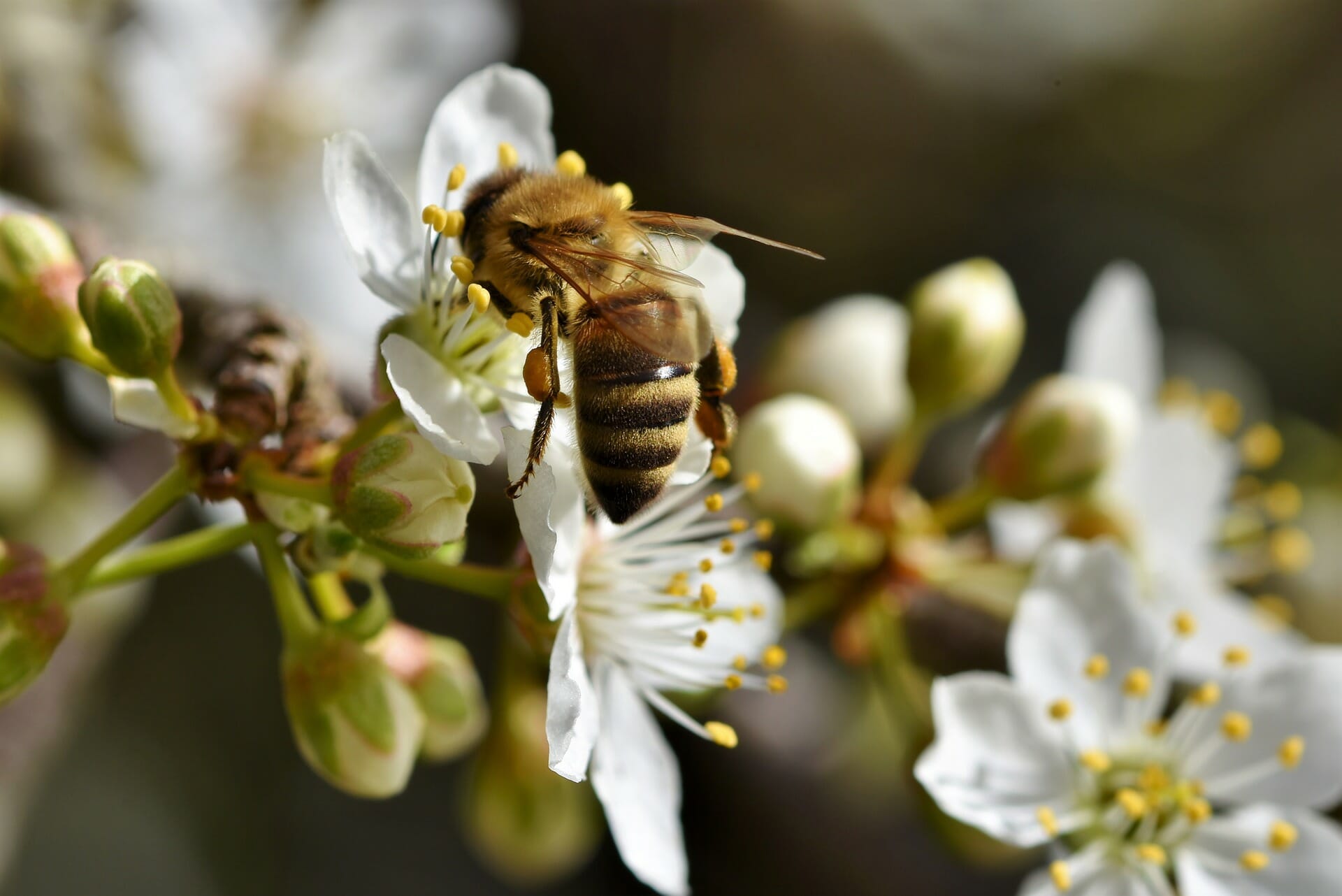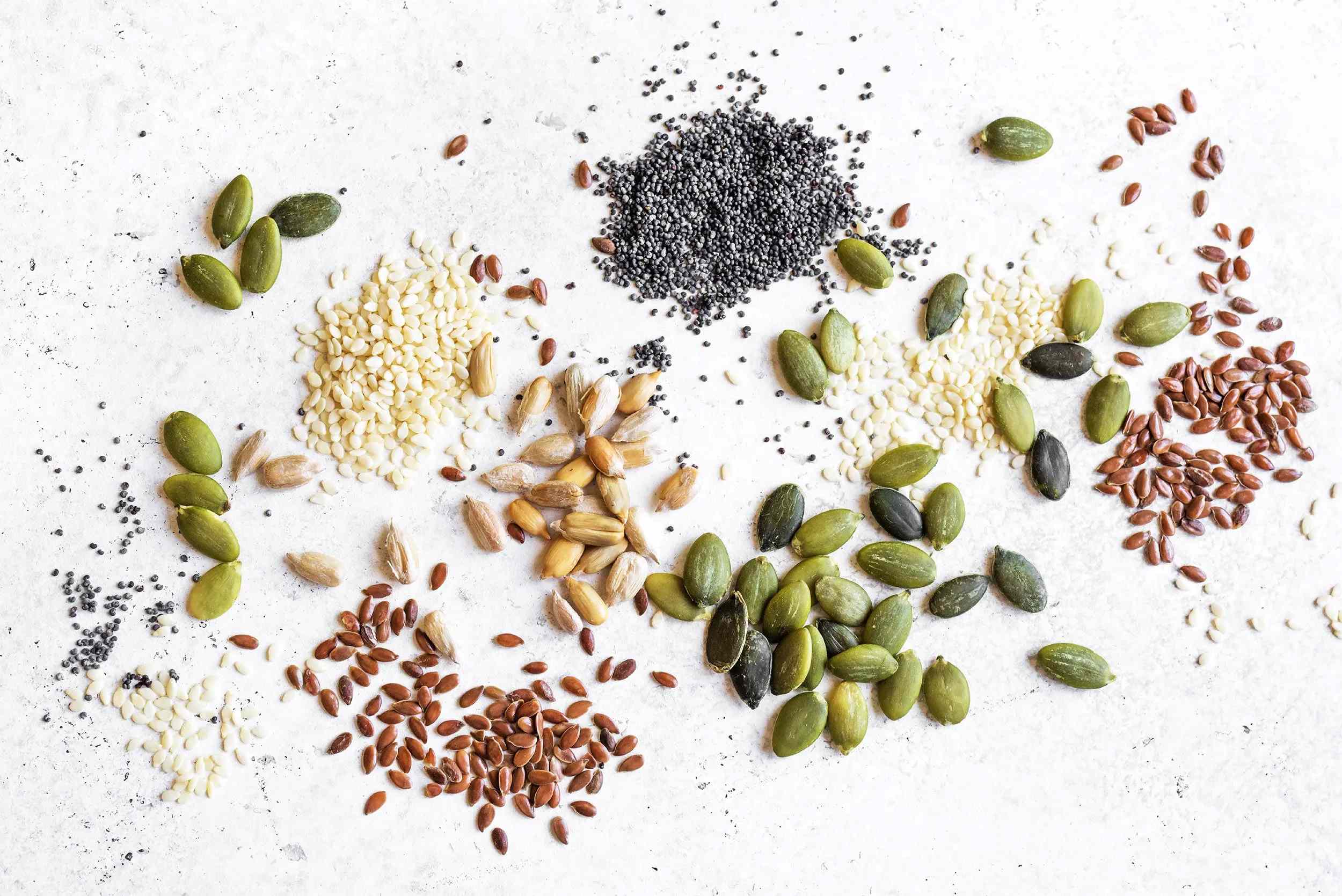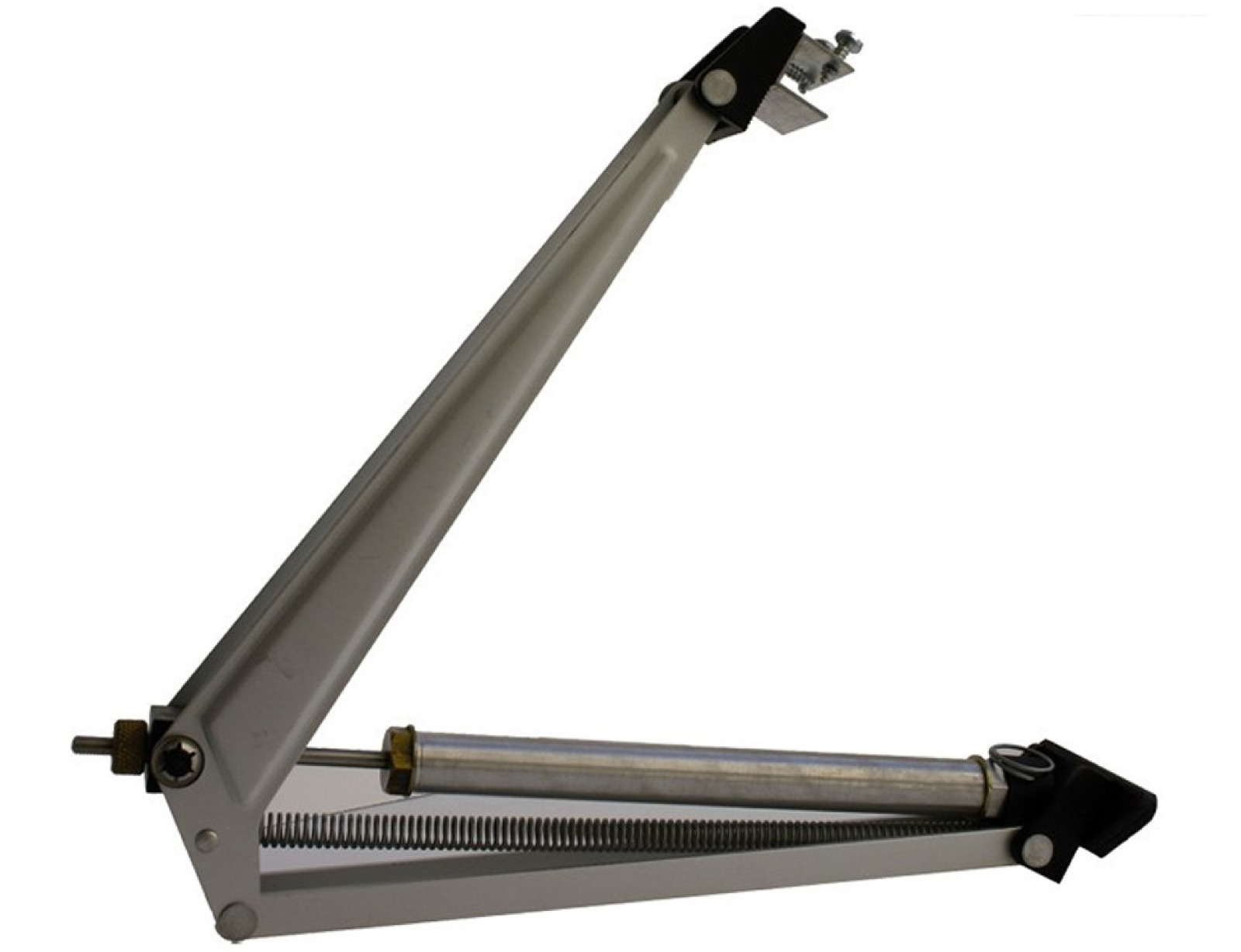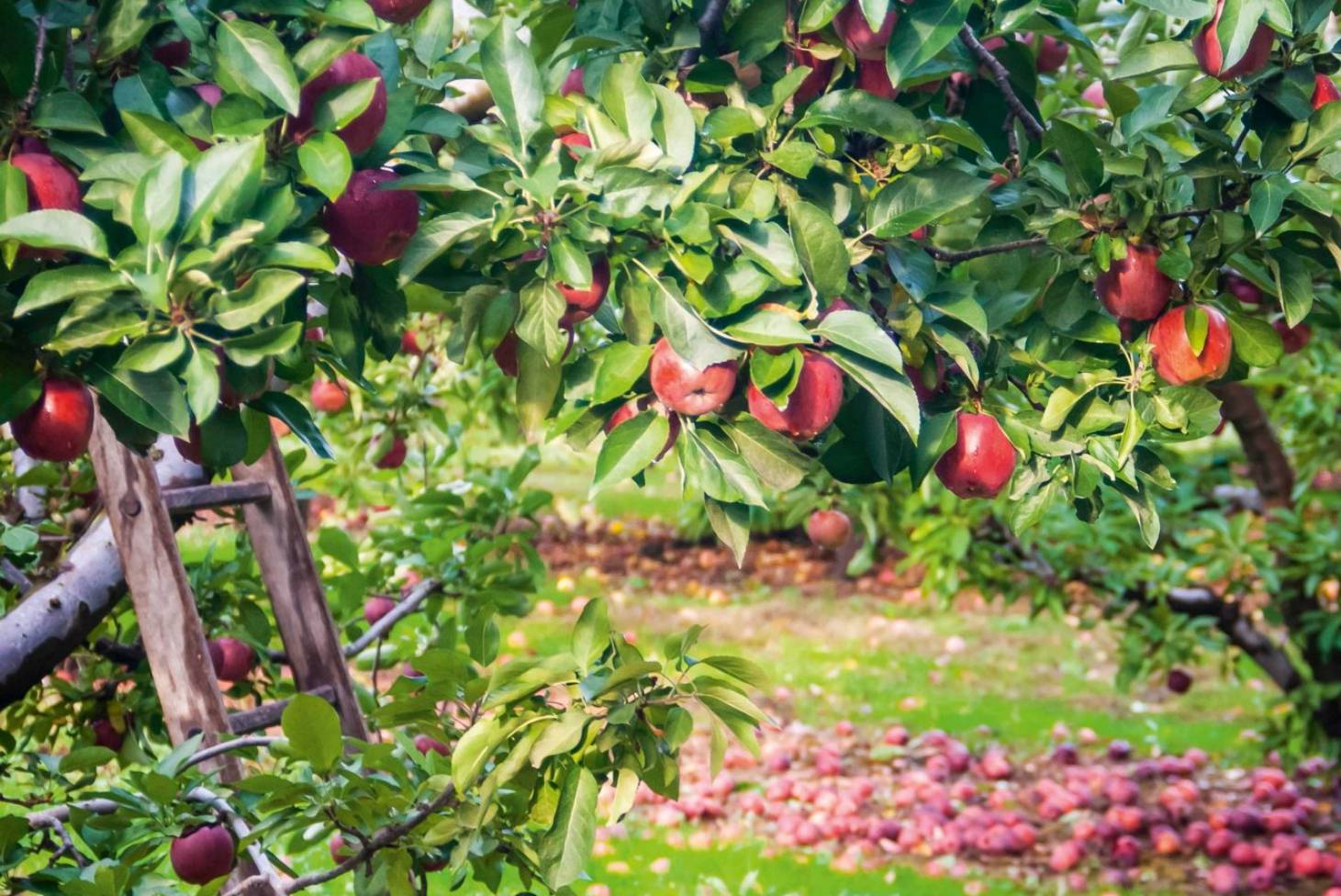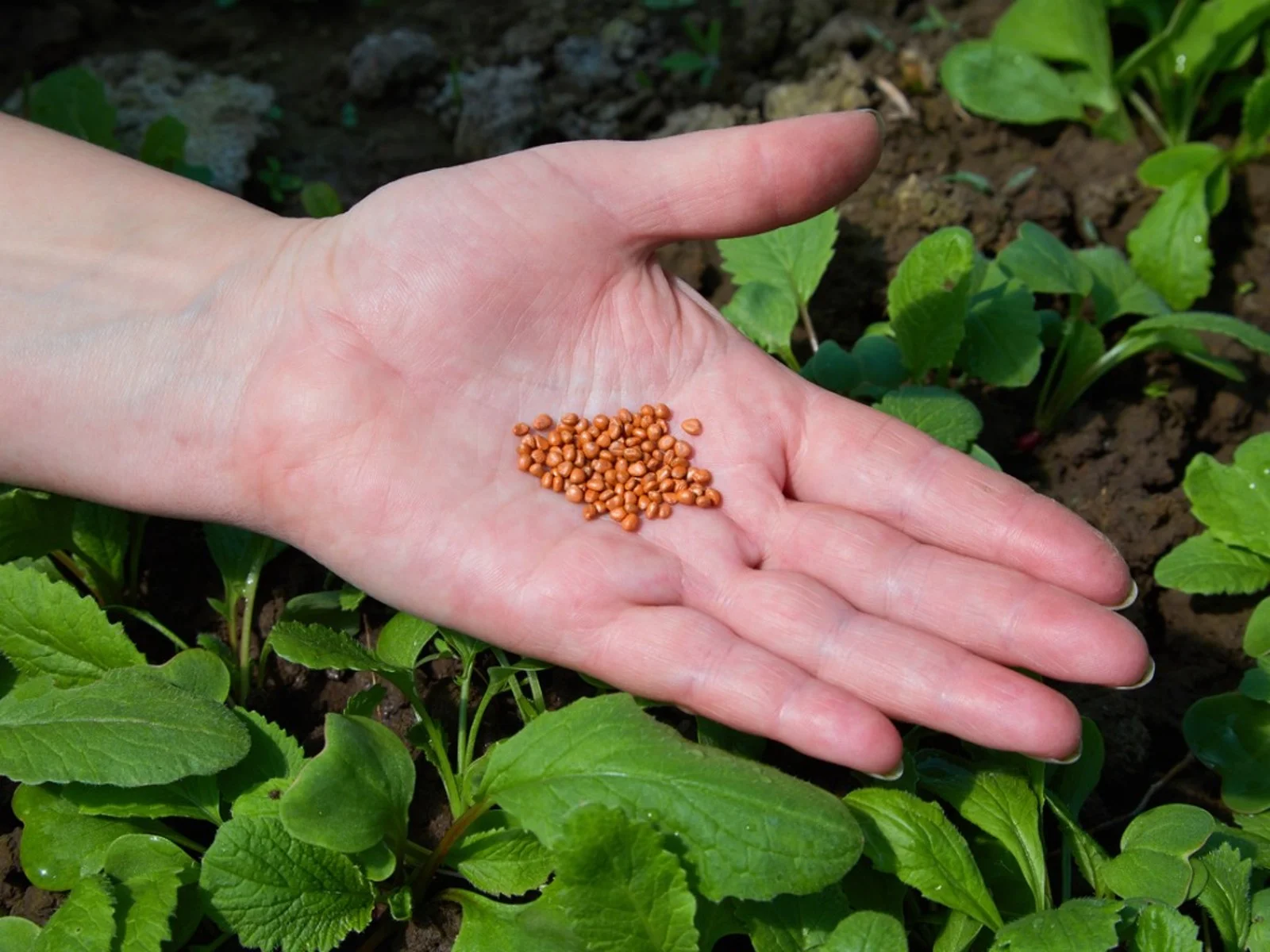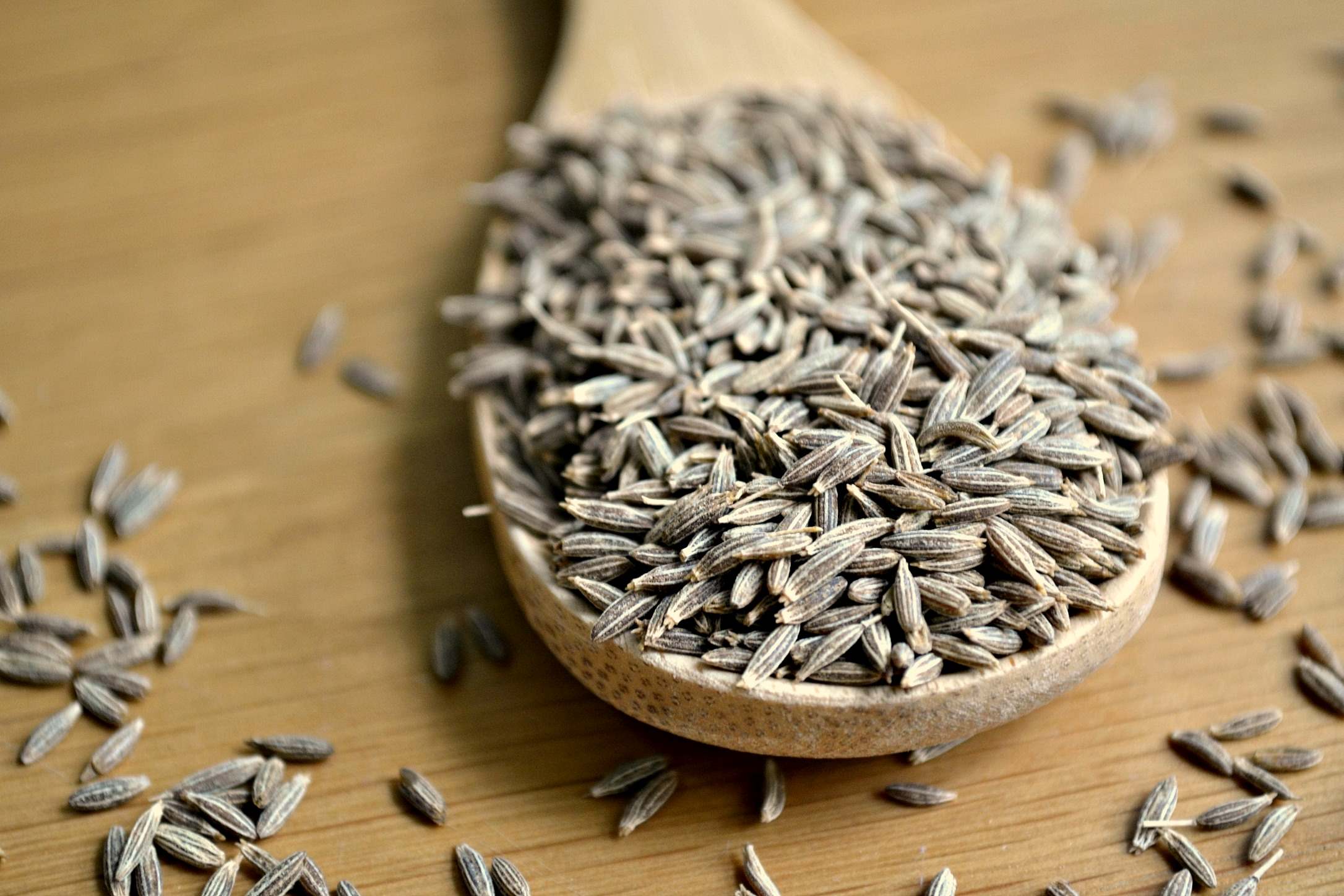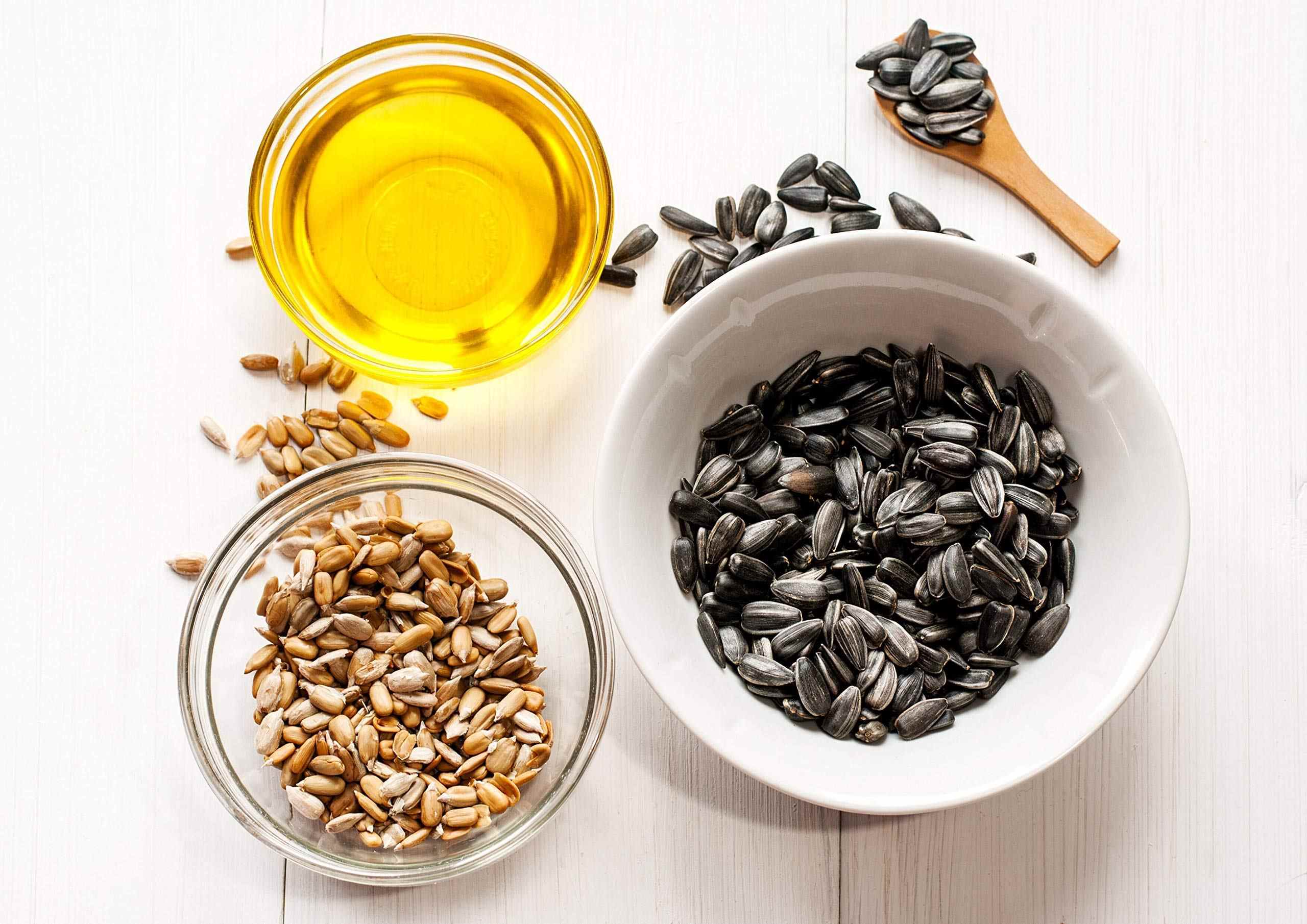Home>Gardening Basics>Getting Started>What Are Open Pollinated Seeds
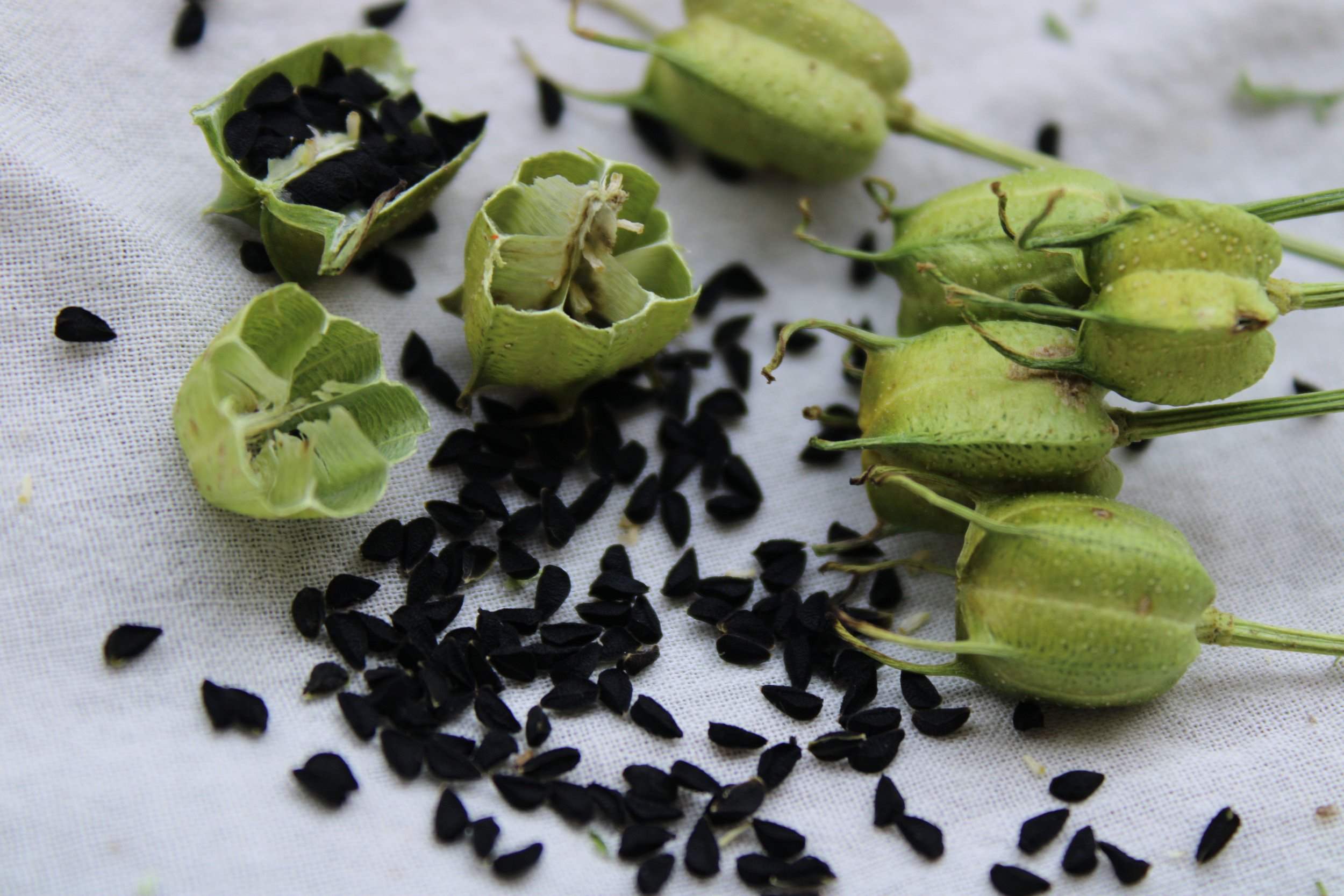

Getting Started
What Are Open Pollinated Seeds
Modified: January 22, 2024
Discover the basics of open pollinated seeds and how to get started in your own garden. Learn the benefits and tips for success with open pollination.
(Many of the links in this article redirect to a specific reviewed product. Your purchase of these products through affiliate links helps to generate commission for Chicagolandgardening.com, at no extra cost. Learn more)
Table of Contents
Introduction
Welcome to the fascinating world of open pollinated seeds! In our modern agricultural landscape, where hybrid seeds and genetically modified organisms often take center stage, open pollinated seeds might seem like a relic of the past. However, their significance and value should not be understated. Open pollinated seeds are the foundation of traditional farming practices, serving as a vital resource for sustainable food production.
So, what exactly are open pollinated seeds? In simplest terms, open pollinated seeds are those that can reproduce true to their parent plant, maintaining consistent traits from one generation to the next. These seeds rely on natural mechanisms such as wind, insects, or birds for pollination, resulting in a diverse gene pool that embodies the unique characteristics of the plant species.
One of the key characteristics of open pollinated seeds is their genetic stability. Unlike hybrid seeds, which are the result of controlled crosses between two different plant varieties, open pollinated seeds tend to exhibit less genetic variability. This stability allows farmers and gardeners to save seeds from their crops and replant them year after year, preserving the desired traits and adaptation to specific growing conditions.
The benefits of using open pollinated seeds are numerous. Firstly, they promote biodiversity by preserving unique plant varieties that may otherwise be lost in the face of industrial farming practices. This diversity not only ensures the resilience of our food system but also helps in the conservation of rare and heirloom plant species. Additionally, open pollinated seeds are often more affordable and accessible to small-scale farmers, as they can save and share seeds within their community, reducing reliance on commercial seed suppliers.
Now that we have a basic understanding of open pollinated seeds, let’s explore the differences between open pollinated and hybrid seeds in more detail. Understanding the distinctions between these seed types will help us appreciate the value of open pollinated seeds even more.
Definition of Open Pollinated Seeds
Open pollination is a natural process in which plants reproduce through pollination by various external agents, such as wind, insects, or birds. Open pollinated seeds are the result of this process, meaning they are produced through the uncontrolled transfer of pollen from one plant to another within the same species. Unlike hybrid seeds, which are created through the deliberate crossbreeding of two different plant varieties, open pollinated seeds maintain the genetic characteristics of the parent plant.
To be classified as open pollinated, a plant variety must meet certain criteria. Firstly, it must exhibit a certain level of stability, meaning that the traits of the parent plant are reliably passed down from one generation to the next. This genetic stability allows farmers and gardeners to save seeds from open pollinated plants and replant them, confident in the fact that the resulting plants will possess the same desired traits.
Open pollinated seeds also have the potential to display a wide range of genetic diversity. Since they rely on natural pollination methods, a variety of pollen sources can contribute to the fertilization process, resulting in offspring that possess a mix of genetic traits. This genetic diversity is important for the long-term adaptation and resilience of plant populations, as it increases their ability to withstand environmental changes and pests.
Furthermore, open pollinated seeds are often associated with heirloom or heritage plant varieties. These are plant varieties that have been passed down through generations, carefully preserved for their unique traits and cultural significance. By selecting and saving seeds from these heirloom plants, farmers and gardeners contribute to the conservation of traditional crop diversity and play a part in preserving agricultural heritage.
It is important to note that open pollinated seeds are distinct from genetically modified organisms (GMOs). While GMOs involve the intentional alteration of an organism’s genetic material through genetic engineering techniques, open pollinated seeds rely on natural processes and maintain the integrity of the plant species. This differentiation is crucial for those seeking to embrace sustainable and natural farming practices.
Characteristics of Open Pollinated Seeds
Open pollinated seeds possess several distinct characteristics that distinguish them from other types of seeds. These characteristics contribute to their appeal for farmers, gardeners, and seed enthusiasts alike:
- Genetic Stability: Open pollinated seeds exhibit genetic stability, meaning they tend to reproduce true to the parent plant. This stability allows farmers and gardeners to save seeds from their crops and replant them in subsequent growing seasons with confidence that the resulting plants will possess the same desirable traits.
- Adaptability: Over time, open pollinated seeds can become well-adapted to the specific environmental conditions in which they are grown. As they are exposed to various climates, soils, and pests, they naturally undergo a process of selection, resulting in plants that are better suited to their local environment. This adaptability is valuable for farmers and gardeners looking for resilient plant varieties.
- Biodiversity: Open pollinated seeds contribute to biodiversity by maintaining a wide range of genetic traits within a species. Through the natural process of open pollination, diverse sources of pollen contribute to the fertilization of plants, resulting in a mix of genetic characteristics in the offspring. This genetic diversity is crucial for the long-term health and resilience of plant populations.
- Preservation of Heritage Varieties: Open pollinated seeds often encompass heirloom or heritage plant varieties. These are plant varieties that have been passed down through generations due to their unique traits, historical significance, or cultural value. By saving, growing, and sharing open pollinated heirloom seeds, individuals contribute to the preservation of traditional crop diversity and help ensure that these unique plant varieties are not lost over time.
- Accessibility: Open pollinated seeds are generally more accessible and affordable compared to hybrid seeds. Unlike hybrid seeds, which often require purchasing new seeds each year, open pollinated seeds can be saved and replanted by farmers and gardeners. This accessibility empowers individuals, especially small-scale farmers, to have more control over their seed supply and reduce reliance on commercial seed companies.
These characteristics make open pollinated seeds a valuable resource for sustainable agriculture, as they offer genetic stability, adaptability, biodiversity, heritage preservation, and increased accessibility. By utilizing open pollinated seeds, farmers and gardeners can play an active role in preserving plant diversity and promoting sustainable food production.
Benefits of Open Pollinated Seeds
Open pollinated seeds offer a wide range of benefits for farmers, gardeners, and the environment. Let’s explore some of the key advantages:
- Biodiversity Preservation: Open pollinated seeds play a crucial role in maintaining biodiversity in our food system. By growing and saving open pollinated seeds, farmers and gardeners are preserving unique plant varieties that may otherwise be lost in the face of industrial agriculture. This biodiversity not only ensures a variety of flavors, colors, and textures in our food but also helps in the conservation of rare and heirloom plant species.
- Sustainable Agriculture: Open pollinated seeds are a fundamental element of sustainable agriculture. Farmers can save seeds from open pollinated plants and replant them in subsequent seasons, reducing dependency on commercial seed suppliers. This practice not only saves money but also allows farmers to maintain genetic diversity and adaptability within their crops, promoting resilience to pests, diseases, and a changing climate.
- Community Empowerment: Open pollinated seeds empower individuals, particularly small-scale farmers and gardeners, to have more control over their food production. The ability to save, share, and exchange open pollinated seeds within communities fosters seed sovereignty and resilience. It promotes a sense of self-sufficiency and reduces reliance on external sources for seeds, contributing to food security and community cohesion.
- Taste and Nutritional Diversity: Open pollinated seeds often yield crops with superior flavor and nutritional profiles. Through natural cross-pollination, open pollinated plants can develop unique taste characteristics that are lost in mass-produced hybrid varieties. Additionally, the genetic diversity of open pollinated seeds leads to a wider range of nutrient profiles, ensuring a more diverse and nutritious diet.
- Preservation of Cultural Heritage: Many open pollinated seeds are connected to cultural heritage, traditional farming practices, and culinary traditions. By growing and saving open pollinated seeds, individuals contribute to the preservation of cultural diversity and help maintain the unique flavors and ingredients of different regions and communities. It allows for the continuation of farming traditions and the passing down of knowledge from one generation to the next.
These benefits highlight the importance of open pollinated seeds in promoting sustainable agriculture, preserving biodiversity, supporting local communities, and enhancing the flavor and nutritional value of our food. By embracing and advocating for open pollinated seeds, we can work towards a more resilient and diverse food system for future generations.
Differences between Open Pollinated Seeds and Hybrid Seeds
Open pollinated seeds and hybrid seeds are two distinct types of seeds with significant differences. Understanding these differences can help farmers, gardeners, and seed enthusiasts make informed choices about the seeds they use. Here are some key distinctions between open pollinated seeds and hybrid seeds:
- Genetic Stability: Open pollinated seeds exhibit genetic stability, meaning they reproduce true to their parent plant. This means that the offspring of open pollinated seeds will possess the same traits as the parent plant. In contrast, hybrid seeds result from the intentional crossbreeding of two different plant varieties, resulting in offspring that may show a wide range of traits. This lack of genetic stability in hybrid seeds means that saving and replanting their seeds will not yield consistent results.
- Availability and Cost: Open pollinated seeds are generally more widely available and affordable compared to hybrid seeds. Open pollinated seeds can be saved and replanted by farmers and gardeners, reducing the need to purchase new seeds each year. In contrast, hybrid seeds are typically sold by seed companies and need to be purchased annually, leading to higher costs for farmers and gardeners.
- Uniformity: Hybrid seeds often exhibit a higher degree of uniformity in terms of plant size, shape, and yield, making them more desirable for commercial farming. This uniformity is a result of the controlled crossbreeding process used to create hybrid varieties. In contrast, open pollinated seeds can display a wider range of variation in traits, which may be desirable for those interested in preserving biodiversity and adapting to specific growing conditions.
- Genetic Diversity: Open pollinated seeds contribute to genetic diversity within a species. Through natural pollination methods, open pollinated plants receive pollen from a variety of sources, leading to a mix of genetic traits in their offspring. This genetic diversity is important for the long-term resilience and adaptability of plant populations. In contrast, hybrid seeds, being the result of controlled crossbreeding, have less genetic diversity within each variety.
- Preservation of Heirloom Varieties: Open pollinated seeds often encompass heirloom or heritage plant varieties that have been passed down through generations. These varieties have unique traits and cultural significance but may not possess the uniformity required by commercial farming. By saving and replanting open pollinated seeds, farmers and gardeners can contribute to the preservation of these heirloom varieties and maintain traditional crop diversity.
It is important to note that both open pollinated and hybrid seeds have their place in agriculture. Hybrid seeds offer advantages in terms of uniformity and specific traits desired by commercial farmers, while open pollinated seeds promote genetic stability, adaptability, biodiversity, and heritage preservation. The choice between the two depends on the specific goals and context of the grower.
Preservation and Maintenance of Open Pollinated Seeds
Preserving and maintaining open pollinated seeds is essential for ensuring their availability and genetic diversity. By following certain practices, farmers, gardeners, and seed enthusiasts can play a vital role in protecting and promoting these valuable genetic resources:
- Seed Saving: The practice of seed saving involves selecting and harvesting seeds from open pollinated plants for future use. It is important to choose healthy, mature seeds from plants that exhibit the desired traits. Proper seed saving techniques, such as allowing seeds to fully dry before storing them in a cool, dry place, can help maintain seed viability for longer periods.
- Isolation and Pollination Control: To prevent unwanted cross-pollination between open pollinated plants, it’s important to create physical or temporal isolation barriers. This can be done by maintaining sufficient distance between different plant varieties or by staggering the flowering time of crops. By ensuring proper isolation, growers can preserve the genetic purity and maintain the characteristics of their open pollinated varieties.
- Seed Cleaning and Storage: Properly cleaning and storing open pollinated seeds is crucial for maintaining their quality and viability. Seeds can be separated from plant debris through careful winnowing, sieving, or hand-picking methods. After cleaning, seeds should be stored in airtight containers, protected from light, moisture, and extreme temperatures. Labeling the containers with pertinent information, such as the seed variety and the date of collection, is essential for easy identification and proper rotation of the seeds.
- Seed Sharing and Exchanges: Participating in seed sharing and exchange networks is a valuable way to preserve and diversify open pollinated seed stocks. These networks allow farmers and gardeners to share their surplus seeds with others and acquire new varieties in return. By engaging in seed swaps, local seed libraries, or online seed exchanges, individuals can contribute to the conservation and exchange of open pollinated seeds, fostering community resilience and diversity.
- Supporting Seed Banks and Preservation Organizations: Seed banks and preservation organizations play a crucial role in preserving the genetic diversity of open pollinated seeds. These institutions collect, store, and catalogue large seed collections from various sources, ensuring their long-term conservation. Supporting these organizations through donations, volunteering, or participating in their preservation efforts helps safeguard open pollinated seeds for future generations.
By actively engaging in practices such as seed saving, isolation techniques, proper cleaning and storage, seed sharing, and supporting seed banks, individuals can contribute to the preservation and maintenance of open pollinated seeds. These efforts are vital for maintaining the genetic diversity, adaptability, and resilience of our plant populations, ensuring a sustainable and diverse food system for years to come.
Examples of Open Pollinated Seed Varieties
Open pollinated seeds encompass a wide variety of plant species and crop types. Here are a few examples of popular open pollinated seed varieties:
- Tomatoes: Open pollinated tomato varieties are abundant and diverse. Some examples include the Brandywine, Cherokee Purple, and San Marzano tomatoes. These varieties are renowned for their exceptional flavor, vibrant colors, and unique shapes. Open pollinated tomatoes often exhibit a wider range of characteristics and adaptability compared to commercial hybrid varieties.
- Lettuce: Open pollinated lettuce varieties come in different shapes, colors, and growth habits. Examples include the Black Seeded Simpson, Buttercrunch, and Red Salad Bowl lettuce. These varieties offer a range of textures and flavors, from crisp and mild to tender and slightly bitter, providing a delightful array of options for salads and sandwiches.
- Beans: Open pollinated bean varieties include popular options such as the Kentucky Wonder pole bean, Provider bush bean, and Dragon Tongue bean. These varieties offer a range of flavors, textures, and growth habits, allowing growers to choose the type that best suits their preferences and growing conditions.
- Corn: Open pollinated corn varieties have been cultivated by generations of Native American tribes and farmers. Examples include the Hickory King, Painted Mountain, and Golden Bantam varieties. These corn varieties vary in color, flavor, and texture, making them suitable for different culinary uses and preferences.
- Squash: Open pollinated squash varieties come in various shapes, sizes, and flavors. Examples include the popular Black Beauty zucchini, the Waltham Butternut squash, and the Pattypan squash. These varieties offer versatility in the kitchen, allowing for a wide range of culinary creations from soups and stews to roasted vegetables.
These examples represent just a small fraction of the vast array of open pollinated seed varieties available. From vegetables to herbs, flowers to grains, there are open pollinated options for almost every plant species. Embracing open pollinated seeds provides the opportunity to explore the diverse world of plant genetics, experiment with unique flavors and textures, and contribute to the preservation of traditional crop diversity.
Conclusion
Open pollinated seeds are an invaluable resource for sustainable food production, biodiversity preservation, and the preservation of cultural heritage. These seeds, which reproduce true to their parent plants and rely on natural pollination methods, exhibit genetic stability, adaptability, and a wide range of desirable traits. By saving, sharing, and utilizing open pollinated seeds, farmers, gardeners, and seed enthusiasts play a crucial role in maintaining genetic diversity, promoting resilience, and preserving traditional crop varieties.
The benefits of open pollinated seeds are numerous. They offer genetic stability, allowing for the saving and replanting of seeds year after year. Open pollinated seeds also promote genetic diversity, contributing to the long-term adaptability and resilience of plant populations. Additionally, these seeds are often more accessible and affordable, empowering small-scale farmers and gardeners to have more control over their seed supply. Their cultivation supports sustainable agriculture, biodiversity preservation, and the preservation of cultural heritage.
Understanding the differences between open pollinated and hybrid seeds is essential in making informed choices about seed selection. While hybrid seeds offer advantages in terms of uniformity and specific traits desired by commercial farmers, open pollinated seeds provide opportunities for maintaining genetic diversity and adapting to specific growing conditions.
To support open pollinated seeds, it is crucial to engage in practices such as seed saving, isolation techniques, proper cleaning and storage, and participating in seed sharing networks. By doing so, individuals can contribute to the preservation and maintenance of these valuable genetic resources. Supporting seed banks and preservation organizations further ensures the long-term conservation of open pollinated seeds.
Embracing open pollinated seeds not only benefits farmers, gardeners, and the environment but also allows us to celebrate the diverse flavors, textures, and cultural traditions associated with different plant varieties. By valuing and promoting open pollinated seeds, we can create a more sustainable and diverse food system for present and future generations to enjoy.
